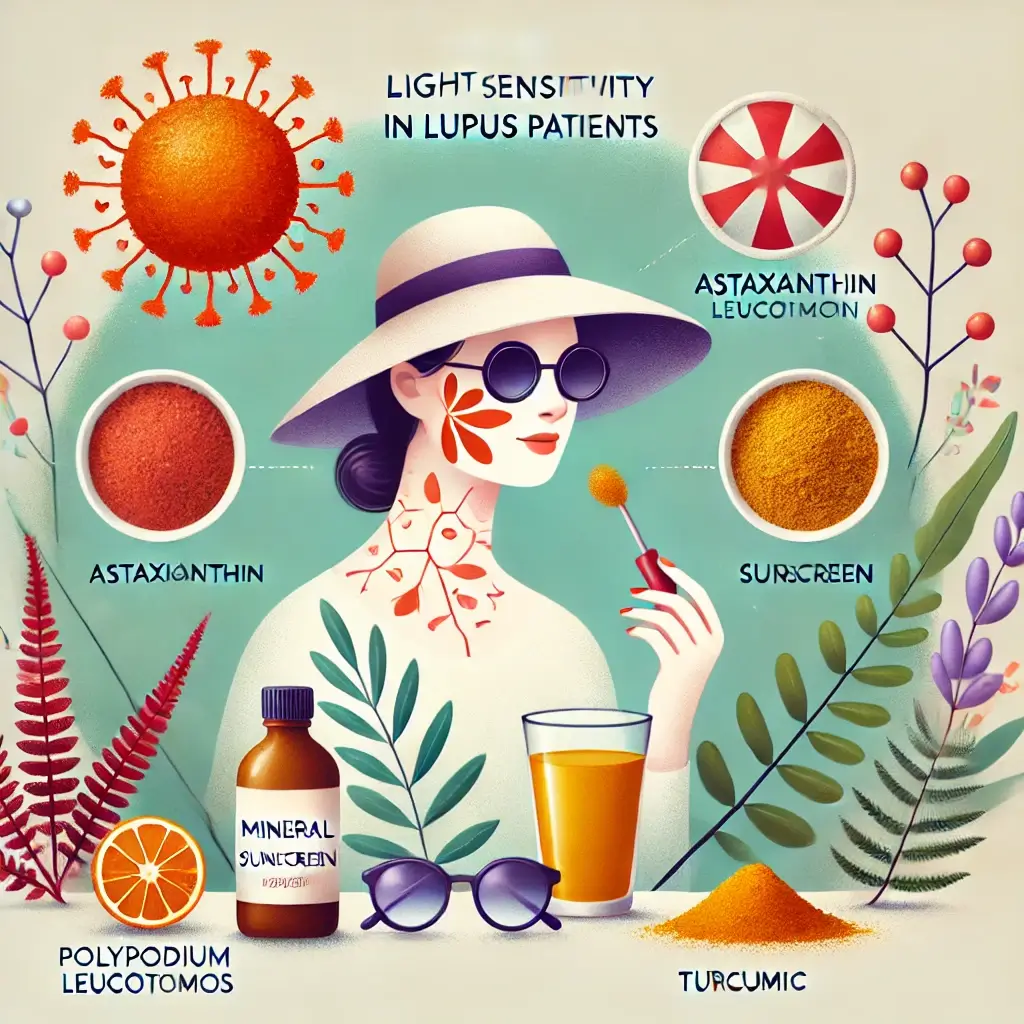Understanding Light Sensitivity in Lupus Patients
For individuals living with systemic lupus erythematosus (SLE), light sensitivity, or photosensitivity, presents a significant challenge that disrupts both physical health and daily life. Photosensitivity occurs when exposure to ultraviolet (UV) light causes immune activation, leading to skin rashes, systemic inflammation, and severe lupus flares. Conventional treatments such as chemical sunscreens, antimalarials, and immunosuppressants are often used to manage symptoms, but they can have side effects or provide incomplete protection.
Natural Approaches to Light Sensitivity Management
In recent years, holistic and natural approaches to managing light sensitivity have gained attention as effective, safer alternatives or complementary solutions. These methods combine internal support through antioxidants and immune-modulating nutrients with external protection via natural sunscreens and skin recovery agents. By addressing the root causes of light sensitivity and strengthening the body’s defenses, natural interventions can help lupus patients achieve better outcomes without relying solely on pharmaceuticals.
Research-Backed Natural Compounds
Research highlights the importance of natural compounds such as astaxanthin, polypodium leucotomos, and curcumin in protecting against UV-induced skin damage. Likewise, post-exposure recovery solutions like aloe vera and sea buckthorn oil offer gentle yet effective relief from inflammation and irritation. When combined with practical lifestyle adjustments, these strategies create a comprehensive approach to managing photosensitivity, empowering patients to take control of their health.
Internal Protection Through Antioxidants
The body’s ability to combat UV damage depends largely on antioxidants, which neutralize free radicals and reduce cellular damage caused by oxidative stress.
Key Natural Compounds for UV Protection
Astaxanthin derived from microalgae for UV protection: A potent antioxidant derived from microalgae, astaxanthin has shown significant benefits for UV protection. Studies indicate that a daily dose of 8-12mg reduces skin redness, inflammation, and oxidative damage following UV exposure. Its anti-inflammatory properties also support immune regulation, which is critical for lupus patients.
Polypodium Leucotomos Benefits
This fern extract is widely studied for its photoprotective properties. Research has demonstrated that 240-480mg daily reduces UV-induced erythema and DNA damage while improving skin resilience.
Carotenoids for Skin Protection
Beta-Carotene and Lycopene as natural UV shields: These carotenoids accumulate in the skin and act as natural UV shields. Studies show that beta-carotene (25,000 IU daily) and lycopene (10-30mg daily) enhance skin protection and reduce sunburn severity by neutralizing free radicals.
Curcumin’s Role in UV Protection
Known for its anti-inflammatory and antioxidant properties, curcumin from turmeric inhibits inflammatory pathways. Supplementing with 1000-2000mg daily reduces UV-induced flare-ups and systemic inflammation.
Green Tea Extract Benefits
Rich in polyphenols, green tea extract reduces oxidative stress and inflammation. Doses of 300-900mg daily have been shown to protect against skin damage caused by UV rays.
External Protection Strategies
External barriers are critical for preventing immediate UV exposure and supporting skin recovery.
Natural Sunscreen Solutions
Mineral sunscreens with zinc oxide and titanium dioxide offer broad-spectrum UV protection. Unlike chemical sunscreens, these physical barriers are non-toxic and safe for sensitive skin. Regular application and reapplication throughout the day are essential for effective protection.
Skin Recovery and Healing
Skin Recovery Solutions include aloe vera for anti-inflammatory and healing properties, sea buckthorn oil rich in antioxidants and vitamins, and topical green tea extracts for additional photoprotection.
Lifestyle Modifications for UV Protection
Holistic management of photosensitivity extends beyond supplementation and external barriers. Simple lifestyle changes can further enhance protection and improve quality of life through timing outdoor activities during low UV hours, wearing protective clothing, and implementing indoor protection measures.
Clinical Evidence and Research
The effectiveness of natural approaches is supported by clinical studies on antioxidants and immune modulators in photoprotection. For example, Anderson et al. (2023) demonstrated that polypodium leucotomos significantly reduced flare severity in photosensitive lupus patients. Similarly, Lee et al. (2022) confirmed astaxanthin’s ability to improve skin resilience and lower oxidative stress.
Comprehensive Treatment Approach
Managing photosensitivity in lupus requires an integrative approach combining internal protection, external barriers, and lifestyle modifications. Natural compounds such as astaxanthin, polypodium leucotomos, and curcumin provide evidence-based solutions for protecting against UV-induced skin damage and inflammation. Coupled with external protection from natural sunscreens and soothing recovery agents like aloe vera and sea buckthorn oil, these strategies empower patients to reduce flare frequency and improve their overall quality of life. By embracing natural interventions, lupus patients can gain greater control over their health and well-being, paving the way for a more comfortable and active lifestyle.
